By Dr. C. D. Sreenivasa Murthy
The British Government took over the administration of India from the East India Company immediately after the First War of Independence (Sepoy Mutiny) in 1857. They had a very low opinion about Indians and their capacity to rule themselves. In 1927, the then Secretary of State for India, Lord Birkenhead challenged Indians by saying, “Let them produce a Constitution which carries behind it a fair measure of general agreement among the great peoples of India.” In response, the Indian National Congress in 1928 appointed a Committee with Motilal Nehru as the Chairman “to determine the Principles of the Constitution for India.” The Motilal Nehru report was submitted on 10th August, 1928. It was an outline of a Draft Constitution for India. Most of its features were later included in the Constitution of India. The Nehru’s report laid special emphasis on securing fundamental human rights and visualised a Parliamentary system. It is interesting to note that Motilal Nehru report had recommended that “the redistribution of provinces should take place on a linguistic basis.”
The first session of the Constituent Assembly was held on 9th December, 1946. The Muslim League stayed away from the deliberations and the Congress Muslims attended the session.

The Mountbatten Plan was announced on 3rd June. The Mountbatten Plan clearly made certain the partition of India as India and Pakistan. After the declaration of Independence on 15th August, 1947, the Constituent Assembly became a sovereign body and it served as a Constitution-making body as well as the Legislating organ.
The Constituent Assembly consisted of elected members, nominated eminent personalities and representatives of Princely States. In the Constitution-making process, both Nehru and Sardar Patel played a very important role by their keen involvement. It was Nehru who spelt out the philosophy and basic features of the Constitution and Sardar played the decisive role in bringing in the representatives of the erstwhile Princely States into the Constituent Assembly, in seeing to it that separate electorates were eliminated and preventing any move for reservation of seats for religious minorities.
It is important to note that on 11th December, 1946 the Constituent Assembly formally appointed Sir Benegal Narasinga Rau as Constitutional Advisor. As Constitutional Advisor of the Constituent Assembly, he laid the groundwork for how members of the Constituent Assembly would draft India’s Constitution. He single-handedly prepared the initial draft by February 1948, which was debated, revised, altered and finally adopted by the Constituent Assembly on 26th November, 1949.
The Constitution borrowed heavily from the well-established Constitutions of the United States, Canada, Ireland, Australia and various other nations and the unwritten Constitutional traditions of Great Britain. It came to a form in various Sub-Committees whose deliberations were later placed before the main Assembly and thoroughly discussed.
The Indian Constitution was drafted by a Core Committee of seven experts headed by Dr. B.R. Ambedkar. All were legal experts or Administrative Luminaries including Sir B.N. Rau, K.M. Munshi, N. Gopalaswamy Ayyangar, Alladi Krishnaswamy Ayyar, Syed Mohammad Saadullah and N. Madhava Rao who was Dewan (Prime Minister) of Mysore. Thus the Committee had two Kannadigas — Sir Benegal Narasinga Rau and Dewan Nyamathi Madhava Rao. D.P. Khaitan was also inducted, but he died in 1948 to be replaced by T.T. Krishnamachari, who became a Minister for two times in the Nehru Cabinet.
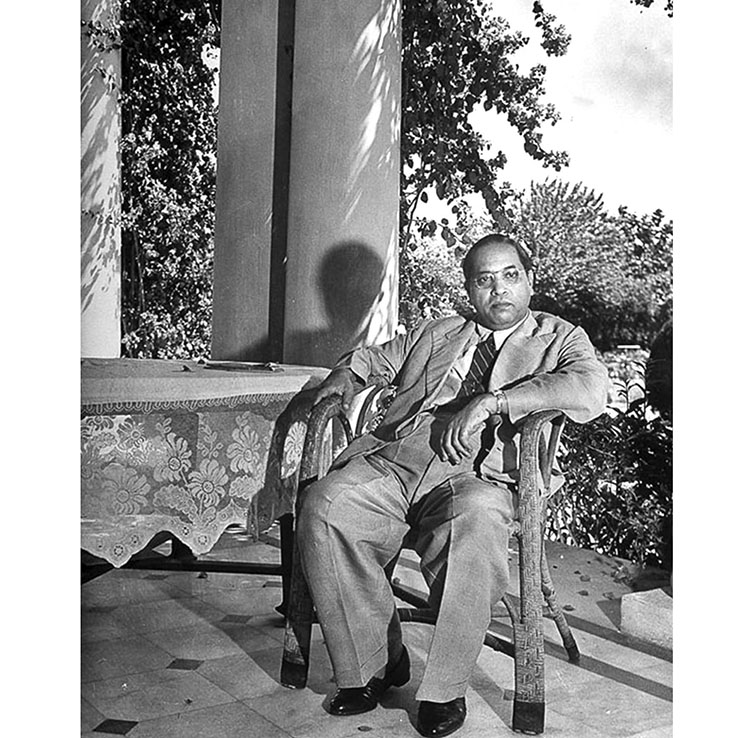
The Constituent Assembly’s resolution setting up Drafting Committee, under the Chairmanship of Dr. B.R. Ambedkar, declared that it was being set up to “Scrutinise the Draft of the text of the Constitution prepared by the Constitutional Adviser (Sir Benegal Narasinga Rau) giving effect to the decisions taken already in the Assembly and including all matters ancillary thereto or which have to be provided in such a Constitution, and to submit to the Assembly for consideration the text of the Draft Constitution as revised by the Committee.” The Drafting Committee, under the Chairmanship of Dr. Ambedkar, declared that the ‘Draft Constitution’ was being scrutinised thoroughly by Sir B.N. Rau for making it one of the world’s best Constitutions. Rau was not a member of the Constitutional Assembly but was the most important expert who did the primary thinking and writing.
Profile: Sir Benegal Narasinga Rau was born on 26th February 1887 at Chitrapur Saraswat community in Mangalore (Mangaluru), Madras Presidency (present day) Karnataka. He grew up in a family of intellectuals with his father B.R. Rau being a leading doctor in city. One of his brothers, Benegal Rama Rau, went on to become the second Governor of the Reserve Bank in Independent India.
Earning a scholarship, Sir Benegal Narasinga Rau (B.N. Rau) did his studies at the illustrious Trinity College, Cambridge. Later, he passed the coveted Indian Civil Service examination in 1909 and was posted to Bengal on his first assignment. For the next two decades, he served both in the ICS and the Judiciary, serving as a Judge in the Calcutta High Court. He retired from service in 1944, when he was appointed as the Prime Minister of the Princely State of Jammu and Kashmir. However, he soon left the job — due to differences with Hari Singh, the then Maharaja of Kashmir.
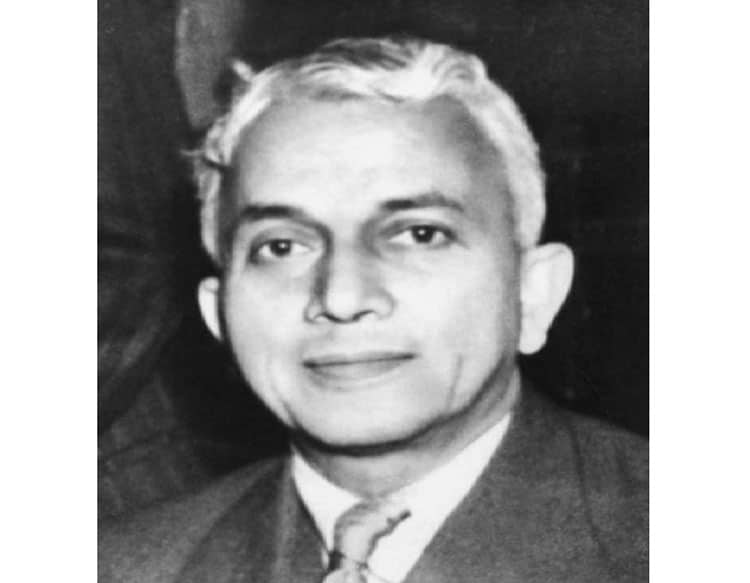
Before his tenure as Constitutional Advisor, he served as a Secretary in the Governor-General’s Office working on the subject of Constitutional reforms. After his retirement, Nehru and Patel persuaded him to work as Constitutional Advisor and head the CAS Secretariat. When he took over the position of Constitutional Advisor and led the establishment of the CAS in July 1946, he laid down firm conditions before the Constituent Assembly. “The whole organisation is non-political and non-party in character. Its services are equally available to every member, irrespective of party and creed,” he wrote.
We know that the Indian Constitution borrows heavily from Constitutions of other nations. Soon after taking Office as Constitutional Advisor, Rau and his team travelled to the USA, Canada, Ireland and the United Kingdom, where he had personal consultations with scholars, Judges and authorities on Constitutional Law. Before the Constituent Assembly prepared its first draft of the Constitution in October 1947, he wrote Constitutional Precedents — an in-depth analysis “comparing the basic elements of the Constitutions” of different nation States.
Dr. Rajendra Prasad, the President of the Constituent Assembly, said Rau “was the person who visualised the plan and laid the foundation” of the Indian Constitution. Dr. Rajendra Prasad, before signing the Constitution on 26th November, 1949, thanked Rau for having ‘worked honorarily all the time that he was here, assisting the Assembly not only with his knowledge and erudition but also enabled the other members to perform their duties with thoroughness and intelligence by supplying them with the material on which they could work.
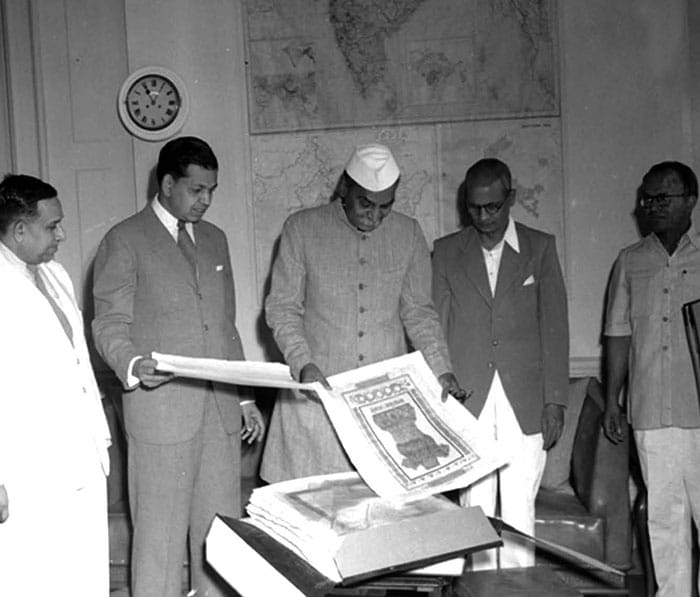
Universal adult franchise
A firm believer of universal adult franchise, Rau believed that no Indian voter should be left behind in the process of election process. He was the leading authority in guiding the process of making the universal franchise from a Constitutional perspective. He took up the responsibility of preparing all India electoral rolls since its inception in 1946 till 1948. Rau found solutions to some of the most difficult logistical problems that arose from registering voters, particularly the refugees entering India following Partition who weren’t technically ‘citizens’ and whose residential status was undetermined. His sense of justice and pursuit of pragmatic, satisfying solutions under very difficult circumstances were the same qualities that he demonstrated when he found solutions to the problems of implementing the franchise. Rau refused any remuneration for his monumental role as the Constitutional Advisor to the Indian Government and the Constituent Assembly.
After he quit Office in late 1948, the Government of Burma (present day Mynamar) requested his services for writing their Constitution.
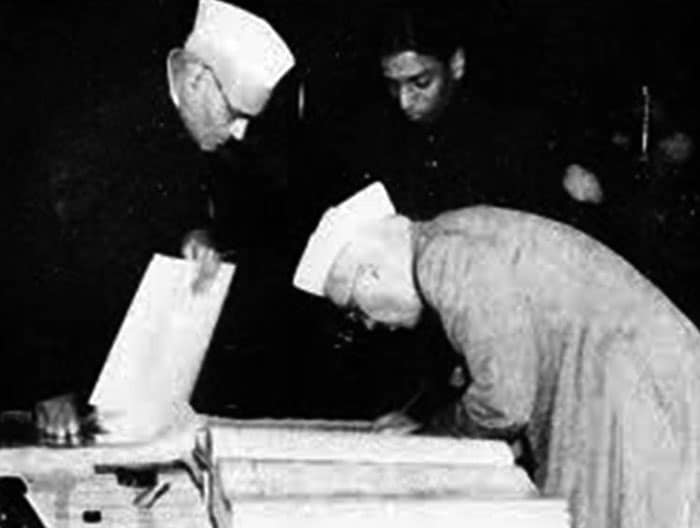
First Indian at ICJ
He served as India’s representative in the United Nations Security Council from 1950 to 1952. He was the first person from India to become the President of the UN Security Council. Before his election to the Court, he was regarded as a candidate for Secretary-General of the United Nations. About his performance at the UNO, the New York Daily Mirror said: “For sheer brilliance in the United Nations, India’s Rau is far ahead of Britain’s whimsical Sir Gladwyn Jebb or America’s excitable Warren Austin.” Later Rau was elected as a Judge to the International Court of Justice (ICJ) in The Hague — the first Indian to attain that eminent and highly respected position.
Unfortunately, Sir Rau passed away in November 1953 in Zurich, Switzerland. The United Nations Organisation termed his death as “a loss to the world community” and Russian delegates called him “a saint among the delegates.”
Dr. B.R. Ambedkar, as Chairman of the Drafting Committee, gave the final shape to the Indian Constitution, and got the final approval of the Constitutional Assembly, and hence he is rightly regarded as its architect. Dr. Benegal Narasinga Rau prepared the conceptual briefs and the basic skeleton. It is said that he played a major role in the inclusion of the directive principles in the Constitution. Probably his contribution is second only to that of Dr. Ambedkar, in making of the Constitution of India. It is unfortunate that this great Indian, eminent Kannadiga, “Kannada Ratna” has been forgotten in our nation and particularly in Karnataka.
[The second part of “We The People” article titled “The Man who (literally) wrote India’s Constitution — Prem Behari Narain Raizada” will be published in SOM tomorrow]



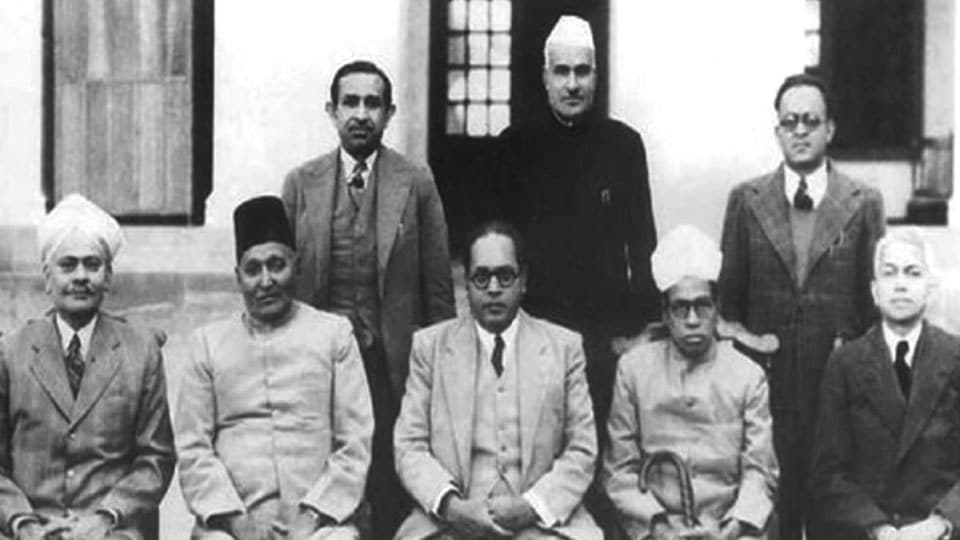




Fascinating account of an outstanding Indian! Incidentally, I think Sir B.N. Rao’s daughter was the writer, Santa Rama Rao. Remember reading some of her books (Birds of Passage etc) in the 1970s. And an account of how she showed RK Narayan around in New York (maybe in the 1950s and 60s).
Sorry, she was apparently the daughter of Sir BN Ray’s younger brother (also an ICS civil servant), B Rama Rau.
Sorry, she was apparently the daughter of Sir BN Rao’s younger brother (also an ICS civil servant), B Rama Rau.
What is the purpose of talking about Indian constitution,when it has been amended 150 times in various forms in its short history of 68 years? Compare this with the US constitution amendments of just 27, in its long history of over 200 years! With 150 amendments, the Indian constitution is changed beyond recognition to suit corrupt politicians in power. Disgraceful.